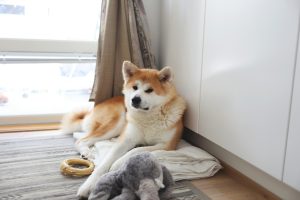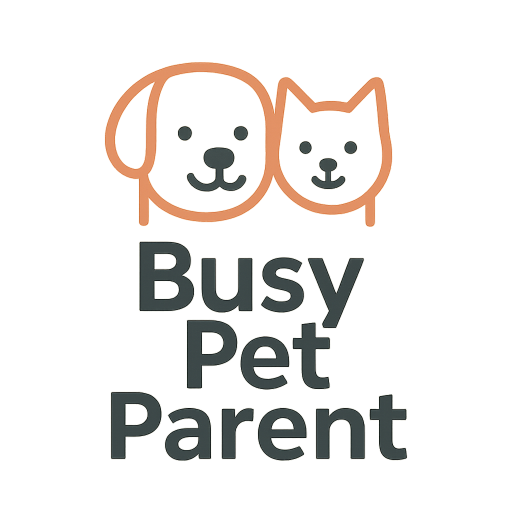
10 Smart Pet Proofing Tips for Apartments That Actually Work
Living with pets in an apartment means sharing a smaller space—so every drawer, power cord, and houseplant becomes part of their playground. Whether you’ve got a mischievous cat who loves to explore or a curious pup who can’t resist chewing, apartment living requires a little extra creativity to keep everyone safe (and your security deposit intact). These 10 smart pet proofing tips for apartments are simple, renter-friendly, and designed to keep your pet healthy without turning your home into a kennel. Best of all, they actually work—even for pets who test every boundary.
1. Secure Trash Cans and Cabinets
In a small space, your pet is never more than a few steps from the trash—so keeping garbage out of paws’ reach is critical. Use a locking lid trash can or stash it inside a cabinet with child-proof latches. Pets can be surprisingly crafty when food scents are involved.
Also secure cabinets with cleaning supplies, snacks, or pet food. Even cats can open lightweight doors and get into mischief. Magnetic baby locks or tension rod barriers are easy to install and don’t damage rental fixtures.
2. Hide and Anchor All Cords
Power cords and charging cables are tempting chew toys—especially for puppies, kittens, and bored pets left home alone. Use cord covers, cable organizers, or furniture to block access. For visible cords, try bitter chew deterrents or cord protectors made from split tubing.
For TVs or standing lamps, anchor cords to the wall or floor using adhesive clips. This prevents your pet from tugging them loose or getting tangled during play. Chewing cords is not just a bad habit—it’s a real electrocution risk.
3. Double-Check Plants for Pet Safety
That cute windowsill succulent might not be so innocent. Many common houseplants are toxic to pets—including lilies, pothos, aloe, and philodendrons. Before adding greenery to your space, check a pet-safe plant list and swap out any risky varieties.
You can also elevate plants out of reach using wall shelves or hanging baskets. For stubborn chewers, try spraying the pot rim with a pet-safe bitter spray or surrounding the base with decorative rocks. According to the Woodlawn Veterinary Hospital, even small nibbles can cause vomiting or worse—so prevention is key.
4. Use Baby Gates or Room Dividers
Sometimes the best way to pet proof is to simply block access. Baby gates and tension-mounted room dividers are a renter-safe way to keep pets out of certain rooms—like the bathroom, kitchen, or entryway. They’re especially helpful for newly adopted pets still learning boundaries.
Look for gates with a walk-through option if you’ll be passing through often, and make sure it’s tall enough to deter jumpers. For cats, vertical mesh barriers or folding screens may work better than standard dog gates.
5. Anchor Heavy Items That Could Tip Over
Curious pets love to jump, tug, or nudge things—especially shelves, coat racks, or floor lamps. In tight apartment spaces, a falling item can do real damage. Anchor tall furniture to the wall using no-drill straps, museum putty, or furniture grips. These are all removable and won’t risk your security deposit.
Also avoid leaning mirrors or unsecured bookcases where your pet plays. Even a small push from a medium-sized dog can knock things over fast. A few sticky pads or brackets now can prevent a trip to the emergency vet later.
6. Keep Cleaning Supplies Locked Away
Many cleaning sprays, disinfectants, and detergents contain chemicals that are toxic to pets. Even a small spill or residue can cause skin irritation or stomach upset. Store these items in high cabinets, or use child locks on under-sink storage areas.
Avoid leaving mops or wipes out to dry where your pet can lick them. If you use strong cleaners on the floor, rinse with clean water afterward. And never use products with essential oils around cats unless they’re confirmed pet-safe.
7. Choose Pet-Friendly Rugs and Flooring
Rugs help protect apartment floors from pet scratches and accidents, but not all are created equal. Look for rugs made from washable, low-pile materials that are easy to vacuum and spot clean. Avoid fringe, tassels, and looped textures that attract chewing or clawing.
Consider using rug anchors or non-slip pads to prevent sliding. For renters with wood or laminate floors, rubber-backed rugs can protect against both damage and noise—making them a win for you and your downstairs neighbors.
8. Cover Air Vents and Small Openings
Apartments often have floor vents, baseboard heaters, or radiator openings that curious pets love to explore. These can be dangerous—especially for cats, small dogs, or rodents. Use vent covers, mesh guards, or magnetic filters to block access without restricting airflow.
Also check behind appliances or under furniture for holes where pets could get stuck. Foam gap blockers and draft sealers can close these off without permanent alteration, keeping your pet safe and your space tidy.
9. Don’t Forget Window and Balcony Safety
Screens and balcony rails may seem secure, but they’re often no match for a jumping cat or an excited dog. For windows, install sturdy pet-proof screens or limit how far they open. Avoid placing furniture near ledges your pet can climb onto.
If your apartment has a balcony, add plexiglass barriers or mesh to block openings and prevent falls. Never leave your pet unattended outdoors, even for a moment. Many tragic accidents happen when owners assume a pet “wouldn’t jump.”
10. Store Medications and Cosmetics Out of Reach
Human medications and beauty products can be extremely toxic to pets—even in tiny doses. Keep all pill bottles, lotions, hair ties, and vitamins in high cabinets or containers with locking lids. Never leave items on nightstands or countertops where a curious paw could knock them down.
Many pets love the smell of menthol, sweeteners, or gelatin capsules. Always assume that if they can reach it, they’ll try to taste it—so safe storage is non-negotiable in pet-friendly homes.
Final Thoughts
Pet proofing your apartment doesn’t mean turning it into a bunker—it just means planning ahead. With these 10 smart strategies, you can create a space that’s safe for your pet and peaceful for you. Whether you’re prepping for a new rescue or fine-tuning for your longtime companion, a few thoughtful changes can make your home more secure, stylish, and stress-free. After all, the best homes are ones where everyone—two-legged or four—feels protected and loved.
Frequently Asked Questions
What’s the best way to pet proof a rental apartment?
Focus on non-permanent solutions like baby gates, furniture anchors, cord protectors, and cabinet locks that don’t require drilling. Use tension rods, adhesive strips, or removable barriers to keep pets safe without damaging the property.
Are essential oils safe to use around pets?
Many essential oils are toxic to cats and some dogs. Always check with your vet before diffusing oils or using them in cleaning products. Even “natural” scents can irritate sensitive pet respiratory systems or cause toxic reactions if ingested.
What should I do if my pet chews on electrical cords?
Immediately unplug the cord and inspect your pet’s mouth for burns or injuries. Seek veterinary attention if you suspect shock. Going forward, use chew-proof cord covers and keep cords hidden behind furniture or secured to walls.
How do I make sure my houseplants are safe for pets?
Refer to pet-safe plant lists from your vet or trusted resources like the ASPCA or Woodlawn Veterinary Hospital. Avoid toxic varieties like lilies, aloe, and pothos, and opt for pet-safe alternatives like spider plants or calatheas.
Can I still have stylish decor in a pet-proofed apartment?
Absolutely! Look for chic, washable rugs, modern cat trees, hidden litter box furniture, and stylish storage bins. Pet proofing is about smart design—not giving up aesthetics. Plenty of brands now offer options that blend safety and style seamlessly.

Join the Busy Pet Parent Newsletter!
Get easy routines, time-saving tips, and the latest gear reviews—delivered straight to your inbox.
Perfect for busy pet owners, apartment dwellers, and anyone who wants a happy, healthy companion (without the stress).
Exclusive guides & checklists
Product recommendations & deals
No spam—unsubscribe anytime!




